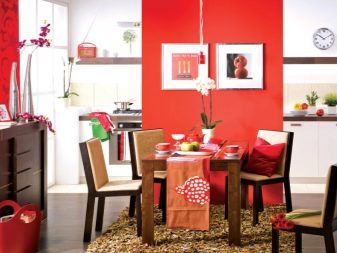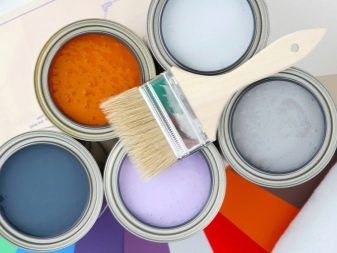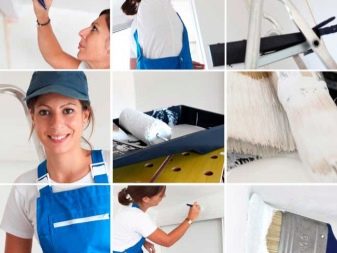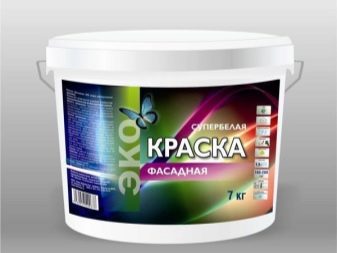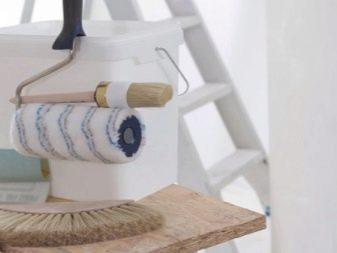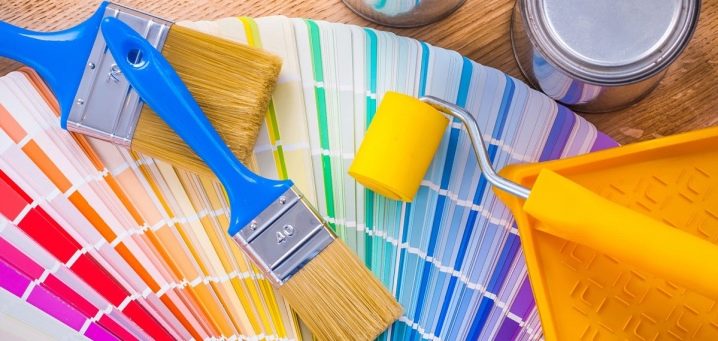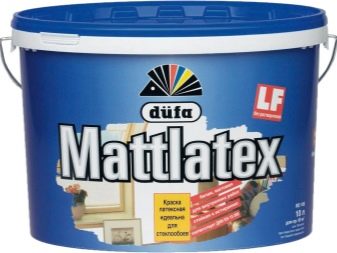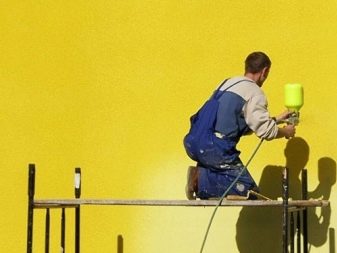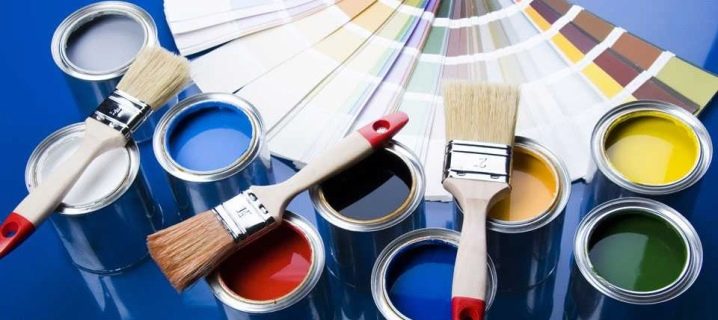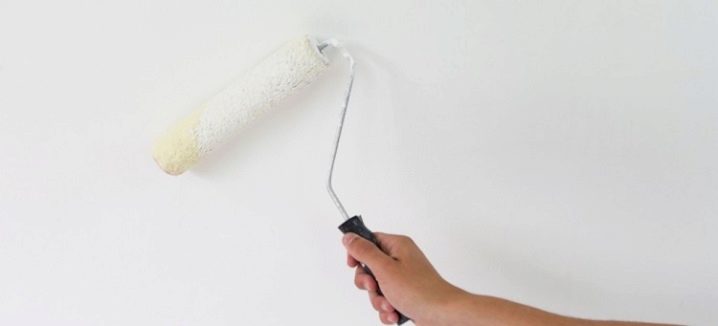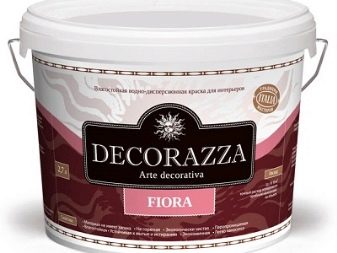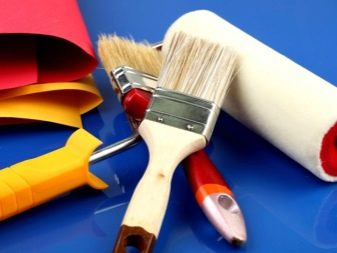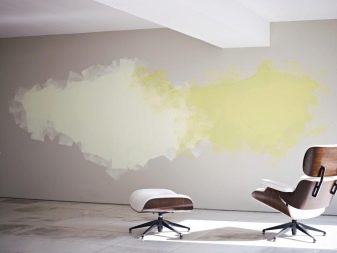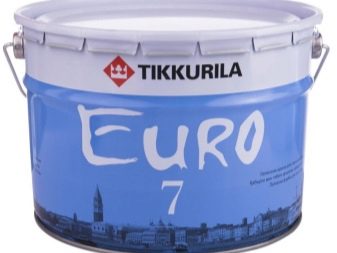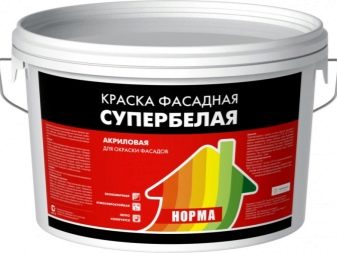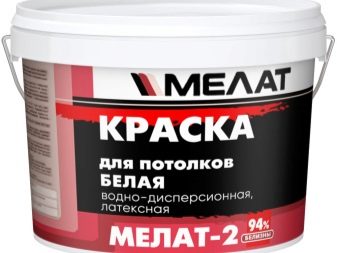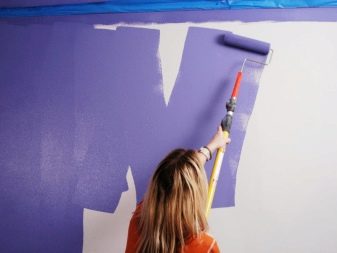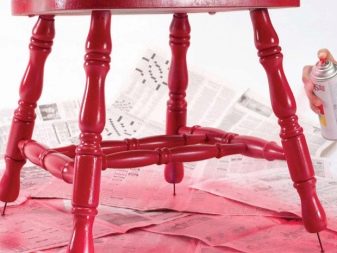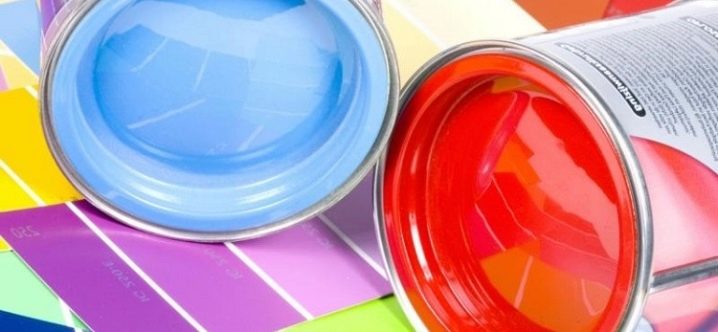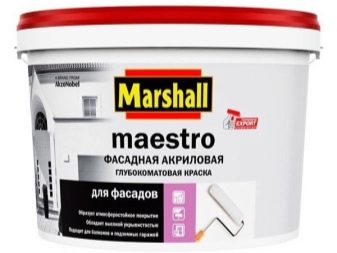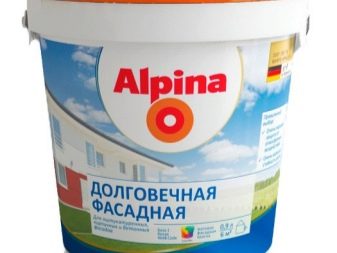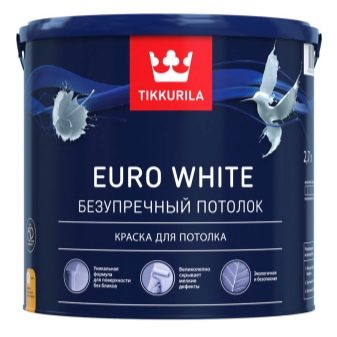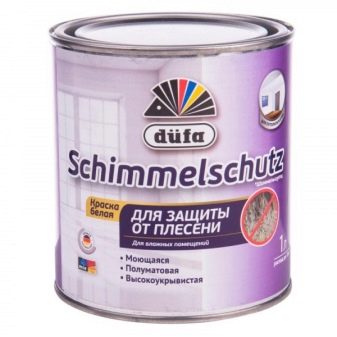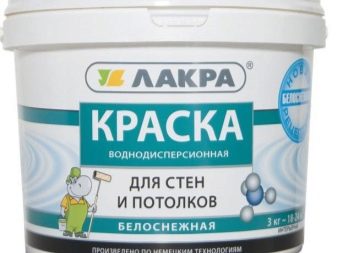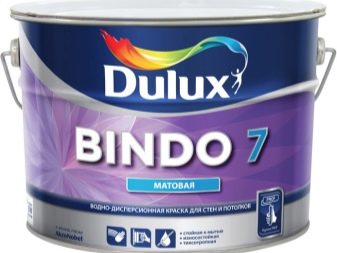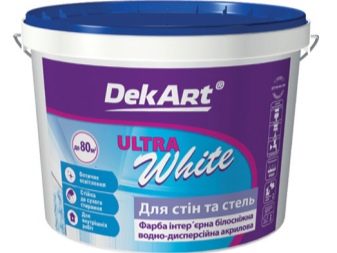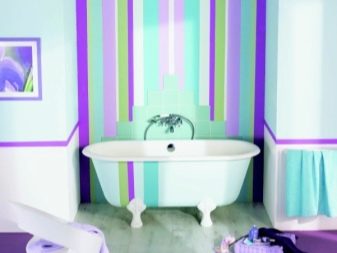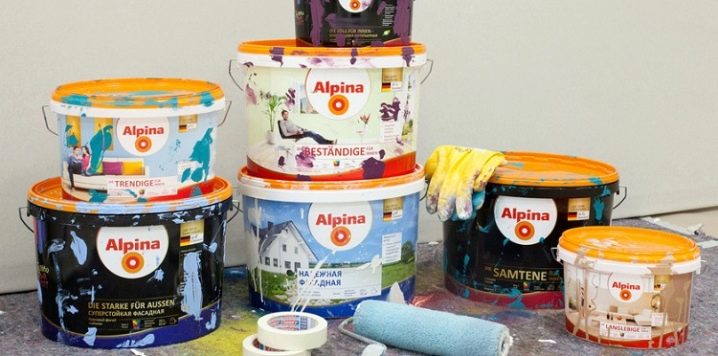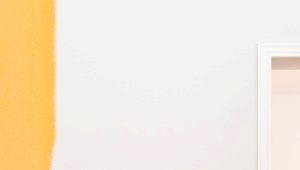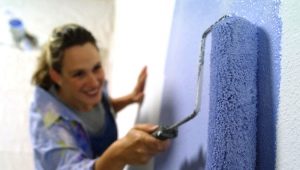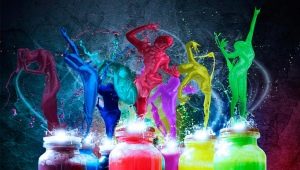Water dispersion paints: classification and characteristics
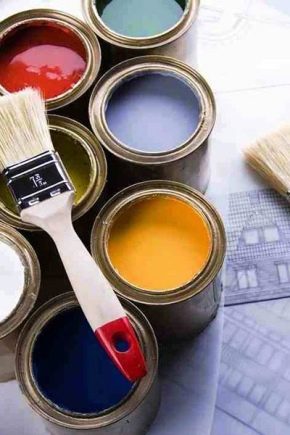
Construction work relating to the finishing of facades of buildings and interior work, require the use of quality materials. For painting various surfaces, coloring compositions are used, which are represented in a large variety by manufacturers of paint and varnish products. They differ in their properties and characteristics, each type has its own characteristics, advantages and disadvantages.
What it is?
When purchasing dispersion paints, it is very important to know what the composition is, for what works it is recommended for use, and what are its main advantages and disadvantages.
VDK today is a very popular materialsince such compositions are very easy to handle the floors and furniture, various barriers and facades, decor items, as well as ceilings and walls inside buildings. The products are perfectly applied on brickwork, concrete base, metal and wood.
VDK appeared on the market recently, but already managed to gain popularity due to durable and attractive coatings, which are obtained as a result of the use of these coloring compositions. However, the surface acquires an ideal and attractive appearance only if the VDK is correctly used and the working area is properly prepared.
Water-dispersion formulations are a dispersion of solid synthetic polymers in water. Most often, the products are manufactured in the state of a liquid paste, which is diluted to the required thickness before use. As a result, for the work of specialists, a liquid is obtained which is transparent or non-transparent type, visually similar to milk. After surface treatment, water evaporates, and a thin and solid layer consisting of polymers remains at the treatment site.
Paint consists of many components. Its main components are:
- Special supplements - This is a large group of substances, among which there are thickeners, emulsifiers, ethylene glycol and other components.
- Coloring pigments, thanks to which the composition is given the desired color.
- Film formers - These are the components by which the polymer layer is formed. These components contribute to the adhesion and durability of the coating.
- Fillers - marble crumb, talc, as well as a number of natural and artificial materials. They are responsible for getting a matte, satin or other surface.
VDK is a safe and environmentally friendly product that is very easy to use, odorless and fireproof. Dispersion paints are also often used, as well as water-based.
Some experts mistakenly believe that there is no difference between them. However, the main differences in quality of the compositions are in the characteristics of these two compositions - moisture resistance and color gamut, as well as in the polymers they contain.
Advantages and disadvantages
The technical properties of water-dispersion coloring compositions occupy a leading position among other varieties of paints, and also significantly ahead of their characteristics materials based on organic solvents. Among the main advantages of VDK are the following properties:
- ease of application;
- safety and safety, including fire safety - they are ensured by the complete absence of natural solvents in the substance;
- mechanical strength;
- excellent adhesion to various materials;
- quick drying - usually the surface does not stick in an hour or two;
- color and texture stability;
- large selection of shades;
- coating durability;
- vapor permeability, which provides surface "breathable" properties.
The opinion that water-based products can be washed off by it is wrong. However, VDK have different resistance to humidity in rooms, therefore in such rooms as a bathroom or a kitchen, it is necessary to use only moisture-resistant products of this type.
Some experts identify certain properties of paint, positioning them as cons of the coloring composition:
- The technology of painting with similar materials requires compliance with the temperature regime - the thermometer indicator should not fall below 5C at a humidity of no more than 80%. Under other conditions, the film does not form: at a lower temperature, it breaks, and at high values of humidity, the composition does not dry out.
- Storage conditions assume the temperature in the room is from 0 to + 30C.
- Water-dispersion formulations form a thinner film than organic-soluble - as a result, the surface for painting must be carefully prepared for work.
- The composition, which has not yet dried, must be covered from possible precipitation on the first day after painting.
- If the air temperature is too high, and the dye will be affected by ultraviolet radiation, the dispersion will dry prematurely, which is fraught with divorce on the surface.
The disadvantages of water-dispersion paints can be attributed, and their high price. But the opportunity to save on materials for its cultivation and washing of the tool allows to justify their cost.
Specifications
The properties possessed by materials determine the quality of paints and varnishes. Water-dispersion products have the following characteristics:
- White. Products for processing facades and dyeing compositions for interior decorating are produced in white, and the desired shade is created just before the start of painting. The level of whiteness will directly depend on the saturation of the final color, the formation of which occurs with the help of coloring pigments. Titanium dioxide is responsible for the quality and brightness of shades and colors.
- Hiding power. Responsible for the amount of consumable composition. The norm is when 1 liter of paint weighs 1.5 kilograms. Products with lower density include more liquid, and vice versa, high density indicates that a large amount of filler was added during the production process. High and low density negatively affect the coverage of the composition.
- Resistant to moisture. This characteristic determines the area in which the composition will work. Dispersion products can be designed for indoor painting, that is, to act as interior products for processing, and be produced for outdoor use. The minimum indicator of moisture resistance is available at PVA. Other compositions, including water-dispersion acrylic products, have good resistance to elevated levels of humidity and a variety of options for cleaning the surface.
- Resistance to light - This indicator is responsible for maintaining an attractive type of coating that is exposed to ultraviolet radiation. Polyvinyl acetate compounds practically do not fade. Latex formulations are recommended for surface treatment in dark rooms.
It is very important to select the coloring composition, based on the scope of the product. For example, basements can be painted with latex materials, since in the sun it will quickly lose its color, but in such rooms they will provide surfaces with durable and reliable coverage.
Acrylic compositions are best used as a front material for painting.
Kinds
Since the scope of the VDK is very diverse, there are several types of products, which differ in their properties and components that make up.
There are three main groups of material:
- Polyvinyl acetate dispersion. Products of this type are inexpensive, the paint retains its original appearance well, but the coating is very unstable to moisture. Recommended for walls and ceilings in rooms with low humidity.
- Acrylic products. This group is represented by the most expensive compositions, the high price of which is justified by their universality in the field of use. Acrylate formulations retain their color perfectly when exposed to sunlight. Washable surface resistant to abrasion and temperature fluctuations.Paints have a good indicator of elasticity, so they easily cope with painting over cracks having a width not exceeding 0.5 mm. Due to surface treatment with such material, it acquires a glossy or matte appearance.
- Styrene butadiene compounds are latex materials, characterized by an average cost and excellent water resistance. The disadvantages of paint and varnish materials in this group include poor resistance to negative temperatures. The compositions showed themselves well when treating surfaces in rooms with a high level of humidity, but they are not intended for facade works, because they have low resistance to light - under such conditions they quickly turn yellow.
Scope of use
The scope of VDK is quite large and directly depends on the type of material.
Most often, such paints are purchased for painting the external and internal elements of the building. The products showed themselves well when working on wood, it paints concrete and metal substrates well, it is used for lining. Before applying the composition, it is necessary to prime the working surface with a brush or a rubber roller.
This paint is also used for processing tree trunks, thereby providing excellent protection against insects, rodents, high and low temperatures.
Manufacturers
Manufacturers of paints and varnishes offer such water-dispersion compositions:
- products for interior painting, for example, silicone;
- facade paints;
- varnishes;
- putty;
- enamel;
- primer.
Turkish brand Marshall is a leader in the ranking of manufacturers of paints, including VDK. Manufactured products are of excellent quality, some brands of compositions are professional, and therefore are used by experienced professionals and painters.
Alpina has a lot of positive feedback about their products. VDK for a tree is very popular in the Russian market. Special attention deserves the front paint of this company, which provides excellent protection against weather conditions while maintaining an excellent type of coating.
Tikkurila and Dufa - leaders in the production of water-dispersion paints with years of experience. A distinctive feature of European products is the structure of the coloring composition, thanks to which the surface after processing will be very pleasant to the touch.
Patriotic Lacra has an excellent hiding power, due to which a matte durable coating is formed on the surface. The group of Russian companies "Lakra" is the largest manufacturer and distributor of paint and varnish materials.
Trademark Duluxowned by AkzoNobel concern is very famous for its products all over the world. Production facilities of the company are engaged in their own developments in the field of creating unique types of coloring compositions that are favorably distinguished by excellent physical properties.
How to choose?
Going to the supermarket for paint, it is necessary to determine the conditions in which the coating will be used. It can be a room or the external surfaces of a building, temperature and humidity can be high or low, the level of illumination can be strong or weak.
It will not be superfluous to take into account the requirements for the coating - resistance to the occurrence of the fungus, the interior component, vapor permeability, as well as the type of working surface.
Storage rules
Acquiring water-dispersion materials, one should be sure that they were stored under the right conditions.
During storage, it is necessary to ensure that the paint does not freeze and does not overheat.Water-dispersion products should be stored at a temperature of from 0 to + 30C.
It is necessary to protect yourself from getting coloring composition in the eyes and face, therefore, Before you open the paint, you must wear glasses, and apply a protective cream on the skin.
From the following video you will learn more about water-dispersion paints.

